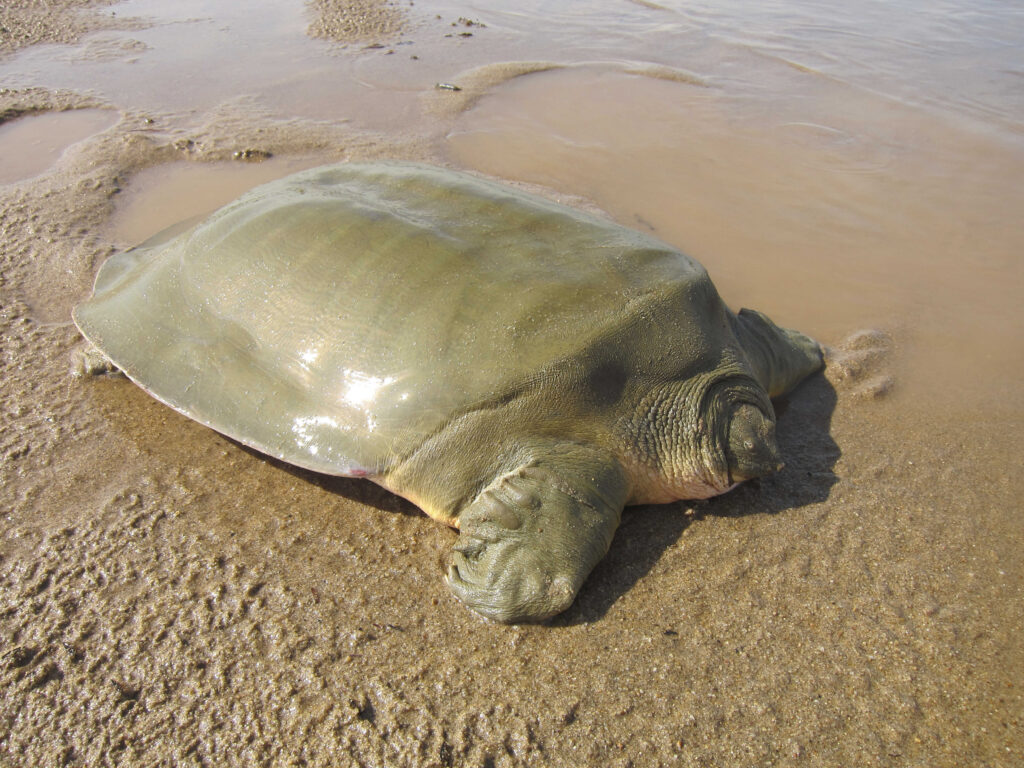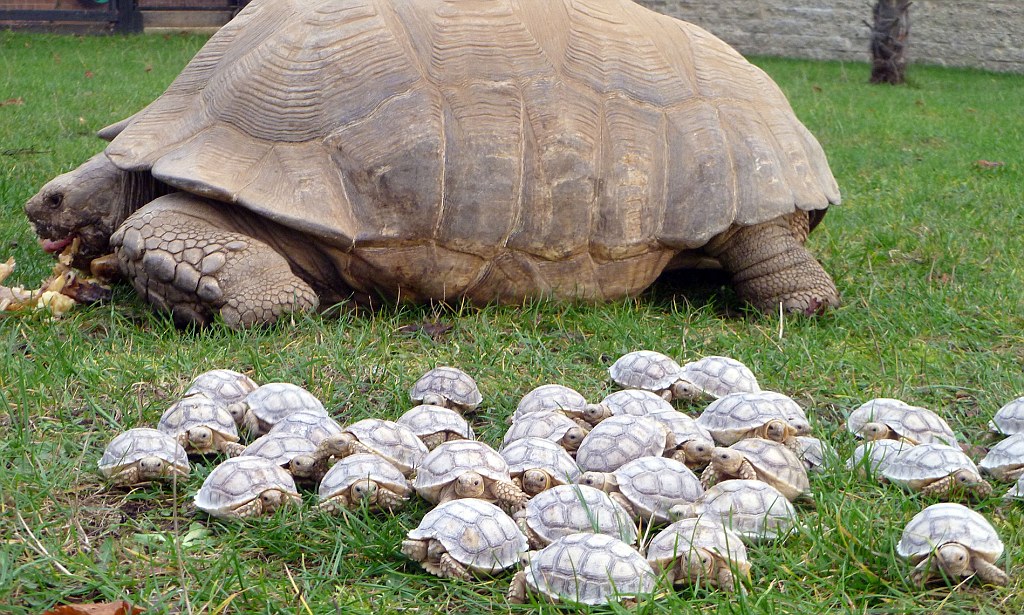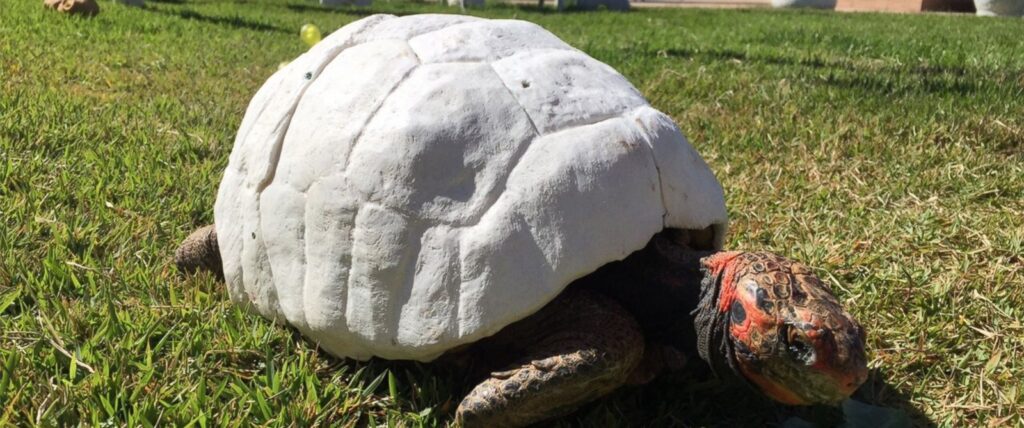Table of Contents
ToggleIntroduction

Turtles are captivating creatures known for their unique shells that serve as armor and protection. However, if you’ve noticed your Why Is My Turtle shell turning white, it might be a cause for concern. A turtle’s shell is an essential part of its anatomy, and its color or appearance changes can indicate underlying health issues or environmental factors. This comprehensive guide will explore why your turtle’s shell might turn white and what steps you can take to address this issue.
Understanding A Turtle’s Shell
Before delving into the reasons behind a turtle’s shell turning white, it’s crucial to understand the structure and composition of this vital body part. A turtle’s shell consists of two main sections: the carapace and the plastron. The shell primarily comprises bone and a keratin layer, the same material in human fingernails and hair. The outer layer of the shell, called scutes, is made of keratin and continuously grows throughout a turtle’s life.
Reasons Behind A White Turtle Shell
Shell Rot: One common cause of a turtle’s shell turning white is shell rot. This condition occurs due to bacterial or fungal infections that affect the shell’s health. Shell rot often manifests as white or discolored patches on the shell’s surface. Poor water quality, inadequate basking areas, or injuries to the shell can contribute to the development of shell rot.
Calcium Deficiency: Insufficient calcium in a turtle’s diet can lead to shell abnormalities, including a white or chalky appearance. Calcium is crucial for maintaining a healthy shell structure. A lack of calcium can result in a condition known as metabolic bone disease (MBD), causing the shell to weaken and become discolored.
Sunlight Exposure: Turtles require adequate exposure to ultraviolet (UV) light, particularly UVB rays, to metabolize calcium and maintain a healthy shell. Insufficient access to natural sunlight or a lack of UVB lighting in their habitat can lead to shell discoloration and weaken the shell’s structure.
Skin Shedding: Sometimes, a turtle’s shell might appear white due to the shedding of old scutes. As turtles grow, they shed their scutes to accommodate their increasing size. This shedding process can make the shell appear lighter or white in certain areas.
Addressing White Shell Issues
Veterinary Examination: If you notice your turtle’s shell turning white or showing signs of abnormality, it’s essential to consult a reptile veterinarian. A professional examination can help diagnose underlying health issues and determine the appropriate treatment.
Proper Nutrition: Ensure your turtle’s diet is well-balanced and includes calcium-rich foods and other essential nutrients. Commercial turtle pellets, leafy greens, and calcium supplements can be incorporated into their diet to support shell health.
Maintaining Clean Habitat: Regularly clean your turtle’s habitat and provide a proper basking area with access to UVB light. Clean water and a suitable environment prevent infections and promote shell health.
UVB Lighting: Invest in high-quality UVB lighting for your turtle’s enclosure to mimic natural sunlight. Providing adequate UVB exposure will aid calcium metabolism and contribute to a healthy shell.
Shell Health And Composition
Natural Shedding: Turtles periodically shed the scutes (outer layer of the shell) as they grow. This shedding might give the appearance of a white or pale shell temporarily. It’s a natural process and usually not a cause for concern unless accompanied by other symptoms.
Calcium Deficiency: Inadequate calcium intake can lead to shell abnormalities, including a whitening or softening of the shell. This deficiency could be due to a poor diet or incorrect environmental conditions affecting calcium absorption.
Environmental Factors
Inadequate Lighting: Insufficient exposure to UVB light affects a turtle’s ability to metabolize calcium properly, resulting in shell problems. Ensure your turtle receives adequate exposure to UVB rays for at least 10-12 hours a day.
Improper Diet: A balanced diet is crucial for a turtle’s shell health. Lack of variety or inadequate nutrients in their food can contribute to shell issues. Ensure your turtle’s diet includes calcium-rich foods like leafy greens, calcium supplements, and occasional protein sources.
Infections And Diseases
Shell Rot: Bacterial or fungal infections can cause parts of the shell to turn white or develop soft spots. Shell rot often occurs due to poor water quality or injuries. Prompt veterinary care and a clean environment are crucial to treat and prevent further damage.
Parasites: External parasites like mites or internal parasites can weaken a turtle’s health, affecting its shell condition. Regular veterinary check-ups and proper hygiene can prevent parasitic infestations.
Physical Injuries Or Trauma

Shell Damage: Accidents or rough handling can lead to cracks, breaks, or damage to the shell. Such injuries may cause discoloration or whitening in affected areas.
Age-Related Changes: As turtles age, their shells might undergo natural changes, including discoloration or fading. These changes are usually gradual and part of the aging process.
Consult a Veterinarian: If you notice any changes in your turtle’s shell color or texture, consult a reptile veterinarian. By identifying the root cause, they can then suggest a course of action.
Assess Diet and Environment: Review your turtle’s diet, lighting, and habitat conditions. Ensure they receive adequate nutrition, proper lighting, and a clean living environment.
Regular Health Checks: Schedule regular check-ups for your turtle to monitor their overall health and shell condition.
Conclusion
A turtle’s shell is vital to its overall health and well-being. If you observe any changes in your turtle’s shell, particularly if it’s turning white, prompt attention and appropriate care are necessary. Whether it’s due to shell rot, nutritional deficiencies, inadequate lighting, or shedding, understanding the reasons behind the discoloration is key to addressing the issue effectively. You can help your turtle maintain a healthy and vibrant shell by ensuring proper care, nutrition, and habitat conditions.







